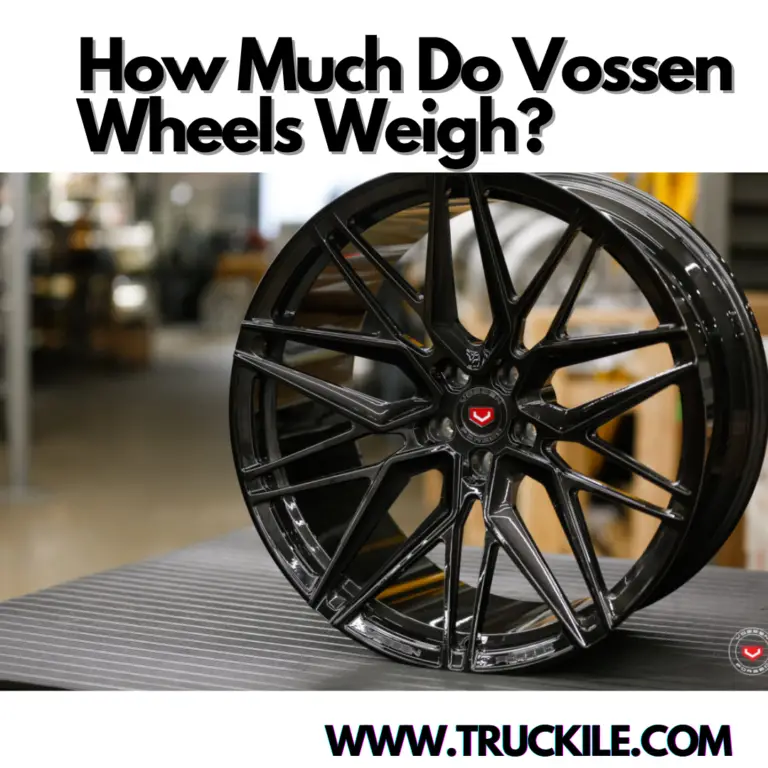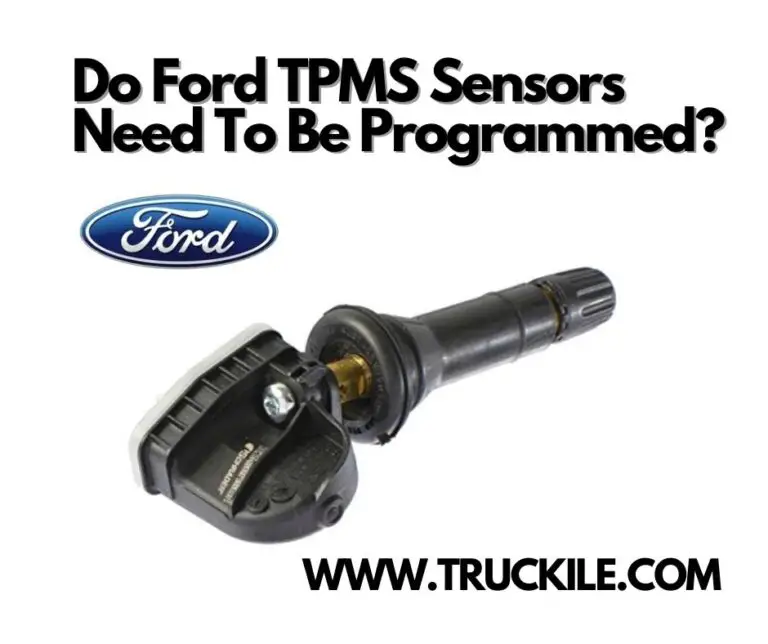Can You Overtighten A Hub Nut?
It is possible to overtighten a hub nut. Before everyone starts worrying, let’s provide some context and find out what happens when you overtighten a nut.
Can you overtighten a hub nut? Let’s go.
Can You Overtighten A Hub Nut?
Tightening the lug nuts on your wheel too tightly could cause the wheel to crack or break. Likewise, if the lug nuts are too loose, the wheel could come off while you’re driving.
A wheel that has separated from a car traveling at high speeds is obviously extremely dangerous, so it’s important to make sure they’re properly tightened before you hit the road.
Mechanics say that most people don’t tighten their lug nuts enough when putting on new wheels. The lug nuts should be tightened in a star pattern in three stages, with each stage using a higher torque setting than the last.
For example, say that you’re changing out your summer tires for winter tires. Start by tightening all of the lug nuts to about 30 foot-pounds (40 newton-meters) of torque with an impact gun using a socket set. Then go back and tighten them all to 80 foot-pounds (110 newton-meters). Finally, go back over all of the lug nuts again and tighten them to 100 foot-pounds (140 newton-meters).
Can You Reuse Hub Nut?
Yes, you can reuse a hub nut. If the hub is removed from an axle shaft and the wheel bearing is not damaged, the wheel bearing can be reused by reinstalling the hub and then “torquing” it down to proper specifications.
The wheel bearings are usually pressed into the spindle of the hub during assembly. These bearings are usually lubricated with grease and sealed with a rubber boot that is installed over the spindle to protect them from dirt, dust, and water.
It is important to inspect these bearings for signs of damage like pitting and spalling before reinstalling them.
What Happens If I Over Torque An Axle Nut?
An axle nut that is too tight will put too much preload on the hub bearings thus diminishing their life expectancy.
You need to tighten the lug nuts or wheel bolts on your car properly, or you could end up with a wheel falling off. The correct method is to use a torque wrench. This is a long handled wrench with a gauge on it that tells you how many foot-pounds of force (or Newton meters) you are applying to the nut.
But, how do you know how tight is too tight? You don’t want to under tighten the wheel nuts because they could come loose while driving and cause the wheel to fall off. On the other hand, over tightening them can damage the wheel studs and brake rotors.
Most cars have a recommended torque spec for their lug nuts listed in their owner’s manual. If you don’t have it handy, you can probably find it online by searching for your vehicle make and model followed by “torque specifications.”
If you have aluminum alloy wheels, be sure to check that there are no special torque specs for them. Since they are less dense than steel wheels and more prone to cracking, they usually require less torque than steel wheels.
Why Can’t You Reuse A Spindle Nut?
A spindle nut is designed to be used once and then thrown away. The reason for this is simple: If a spindle nut is reused, it might not be tight enough. If it’s not tight enough, it could come off the spindle and cause serious damage to the vehicle that it’s being used on.
For example, if you’re working on a car’s front suspension, the spindle nut is responsible for holding the wheel hub in place. It’s also responsible for holding the wheel bearing in its proper location. If the nut isn’t tight enough and comes loose, it can throw the wheel hub out of line. This can cause problems with steering and braking.
The problem with reusing a spindle nut is that there are no standards for torque requirements or even size, so nuts made by different manufacturers are often different in these respects as well. You may be able to get a replacement nut from your local auto parts store, but you’ll have no way of knowing how much torque is required to properly tighten it or how big it is until after you’ve taken your vehicle back apart again and try to put the new one on.
How Tight Should A Hub Bearing Be?
The hub bearing should not be overly tight, but it should be tight enough that if you were to shake the wheels by hand, they would not rattle. The bearings need to be tight enough that they do not move around on the axle and cause excessive friction, which could cause them to overheat and wear out more quickly.
Before you install your new hub bearings, make sure you are using the proper tools for installation. You may need a special bearing press or other tools depending on what kind of vehicle you have.
There are a couple of checks you can do to see if the bearing is loose:
1. If a wheel spins freely and gives no resistance, it could be that the bearings have been adjusted too tight. The wrong adjustment will cause premature failure of the bearing.
2. If there is an excessive amount of play in the wheel when you push or pull it from side to side, this could indicate that the bearings have not been adjusted correctly, or were not assembled correctly during installation.
3. If you notice any noise emitting from your wheel or hub assembly when driving, it could indicate that your wheel bearing is excessively loose or has too much play in it, which can be dangerous for driving conditions.
How Do You Tighten A Nut On A Wheel Bearing?
The car’s lug nuts are designed to be tightened by hand. The lug nuts actually have a taper built into them so as they are tightened with the weight of the car on the wheel, they get tighter and tighter. The nut is not designed to be tightened with a wrench, rather it is designed to be tightened by your bicep muscle which gives you greater leverage than a wrench ever could!
The idea is to tighten the lug nuts in a star pattern, alternating between sides and angles. This ensures that there will be no stress on any one side of the hub or bearing.
One other point is that after you tighten all the lug nuts, you should then put the wrench on each and give it an extra 1/4 or 1/2 turn. This makes sure that your biceps were not too tired at the end of tightening all four or five nuts, and it makes certain that your muscles did not lose too much strength before reaching for the last nut.
How Do You Unstake A Nut?
This is a question that many people ask. It all depends on the type of nut and the end result you are looking for. Do you just want to remove the stake or do you want to remove it without damaging the nut?
The first thing to do is to remove any pressure from the nut. Then you can gently tap it off. The best way is with a rubber mallet and a wooden block.
To get your stake out, you must use a file or an ax. You can also try using a hammer if you have one. The best method for removing these stakes is with a vice and an ax or hammer.
How Do You Torque A Trailer Hub?
First, you want to make sure that the wheel bearing grease is packed all around your wheel bearings. You want to pack them until the grease comes out of the top of the wheel bearing race. Once you have done that, and you have torqued down your nut, there will be more grease and better lubrication for the wheel bearings.
Next, torque your axle nut down. The specifications are on your axle hub. If it doesn’t say what it’s supposed to be torqued at, look at the manufacturer’s website. For example, Dexter says that their spindles should be torqued at 205 ft-lbs. Going back to our earlier example of going from a 1/2″ socket to a 3/4″ socket, if you are using a torque wrench with a 1/2″ drive and it reads 150 ft-lbs., you can use a 3/4″ socket instead of a 1/2″ socket and it will still be accurate as long as you don’t exceed 150 ft-lbs.
What Happens If I Overtighten The Big Axle Nut?
Your 4×4’s drive axle has a nut that goes on the back side of the axle tube. It’s a pretty big nut, and it’s easy to overtighten. Over tightening can cause the axle bracket to break loose from the frame, which will send your front end into a tumbling slide.
This is a big concern when you’re working on your vehicle in the off-season when there’s no one else around to help you out. But it also happens at times when you’re on public roads or trails. It can happen anytime the vehicle is moving, but it is especially likely during hard acceleration or deceleration.
You can check to see if your axle nut is loose by putting a magnet near the nut and then holding it against the side of the engine block. If there’s significant movement, tighten up that nut until it doesn’t move at all.
Can You Overtighten A Hub Nut – Conclusion
Hope we were able to give a response to your question, Can You Overtighten A Hub Nut?
Thanks for reading.

Joe lives and breathes cars and trucks. After many years working in the Auto industry, he decided that it is only right to share his knowledge with the public. As a qualified expert in trucks and cars, he started working for Truckile.com and is the main editor and publisher.






